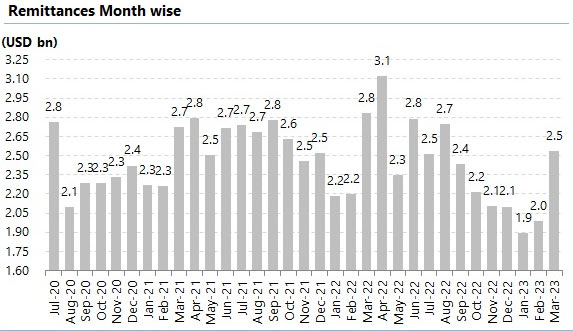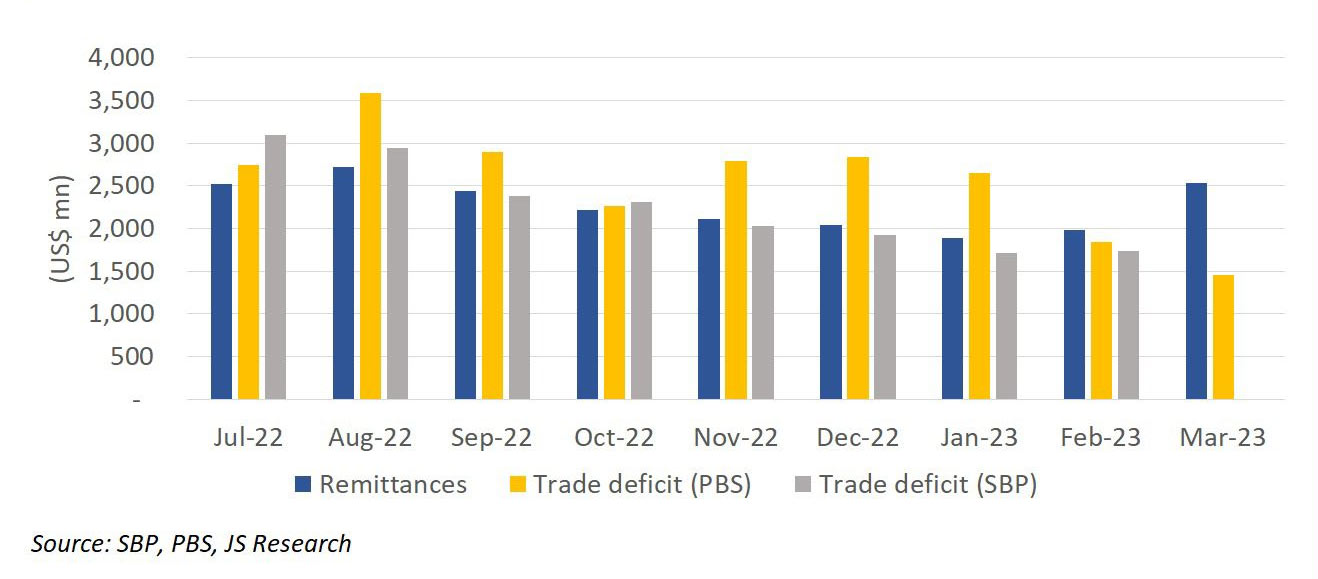
Remittances sent home by overseas Pakistanis touched a seven-month high at $2.5 billion in March apparently due to Ramadan and Eid ul Fitr.
The inflow of workers’ remittances was 27% higher compared to the prior month of February; however, it was 11% lower compared to March 2022, the State Bank of Pakistan (SBP) data showed on Monday.

Moreover, inflows remained comparatively high as non-resident Pakistanis used legal channels to send funds to their family members due to the shrinking gap between rates in the interbank and open market.
Samiullah Tariq, head of research at Pakistan-Kuwait Investment Company, termed the increase a “good omen”, elaborating that the difference between the kerb and interbank rates was minimal.
“Remittances number is highest for past seven months; however, this year Ramadan has started earlier which is why remittance inflow increased earlier than last year,” he explained.
Historical trends suggested that overseas Pakistanis sent record-high remittances ahead of Eid festivals every year.
The Ministry of Finance has projected that the remittances will “further improve due to positive seasonal and Ramadan factor”.
Meanwhile, the central bank — in its monthly remittance bulletin — stated that with the cumulative inflow of $20.5 billion during the first nine months of the fiscal year 2022-23, the remittances decreased by 10.8% as compared to the same period last year.
It should also be noted that with remittances widely surpassing the Pakistan Bureau of Statistics (PBS) trade deficit data this month, the possibility of a current account surplus has increased to a great extent.

It should be noted that the SBP trade deficit data point is usually even lower than the PBS trade deficit.
In its monthly outlook report, the Ministry of Finance also mentioned that the current account deficit is likely to remain on the lower side keeping in view the economic factors contributing to the numbers.







